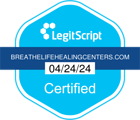
Cutting. WebMD calls it a practice that is foreign and frightening to parents and loved ones of those who partake. Although it may seem like it, it is not a suicide attempt. Cutting is a form of self-injury — where a person is literally making small cuts on his or her body, usually the arms and legs. It’s difficult for many people to understand. But for the people who cut, it helps control their emotional pain, psychologists say.
According to the National Health Service (NHS), there are many different ways people can intentionally harm themselves, such as:
-cutting or burning their skin
-punching themselves
-poisoning themselves with tablets
-misusing alcohol or drugs
-deliberately starving themselves (anorexia nervosa) or binge eating (bulimia nervosa, binge eating disorder, food addiction)
“We can go to any school and ask, ‘Do you know anyone who cuts?’ Yeah, everybody knows someone,” says Karen Conterio, author of the book, Bodily Harm. As the upward trend of self- harm continued, Conterio founded a treatment program for self-harmers called SAFE (Self Abuse Finally Ends) Alternatives at Linden Oak Hospital in Naperville, Ill., outside of Chicago.
Very often, people who self-harm have an eating disorder. “They may have a history of sexual, physical, or verbal abuse,” says Wendy Lader, Ph.D., clinical director for SAFE Alternatives. “Many are sensitive, perfectionists, overachievers. The self-harm begins as a defense against what’s going on in their family, in their lives. They have failed in one area of their lives, so this is a way to get control,” Lader adds.
If you suspect that a friend or relative is self-harming, NHS says to look for any of the following signs:
-unexplained cuts, bruises or cigarette burns, usually on their wrists, arms, thighs, and chest
-keeping themselves fully covered at all times, even in hot weather
-signs of depression, such as low mood, tearfulness or a lack of motivation or interest in anything
-becoming very withdrawn and not speaking to others
-changes in eating habits or being secretive about eating, and any unusual weight loss or weight gain
-signs of low self-esteem, such as blaming themselves for any problems or thinking they are not good enough for something
-signs they have been pulling out their hair
-signs of misuse of alcohol or drugs
If you are worried about someone who is self-harming, NHS recommends the following steps:
-make time to gently and sympathetically discuss the problem with them and listen to what they say without judging them or being critical
-try to appreciate how difficult they are finding life and show them you understand
-discuss the possibility of seeking professional help
-get medical help if any injuries are serious
It’s important not to react in a strongly negative or critical way (such as getting angry), as this kind of reaction is likely to make the problem worse.
The goal is to help the individual identify and address the underlying issues related to the self-injury while teaching healthy coping skills. Generally, Linden Oaks recommends a two- to three-week program in the Self-Injury Partial Program, which consists of six hours of daily therapy including group, individual and family. If you or someone you love is suffering in silence, call Breathe Life Healing Center, we can help find a time and place to treat this serious addiction.













